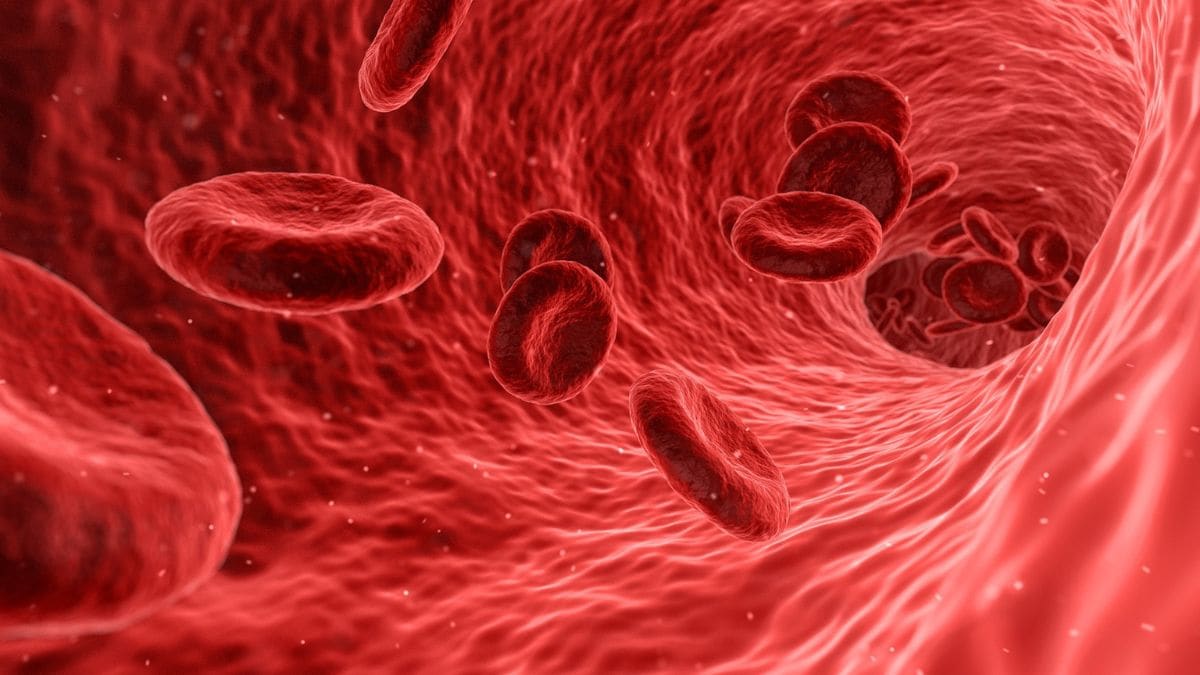
Scientists have made a groundbreaking discovery with the identification of a new blood group system, MAL, solving a medical mystery that has puzzled researchers for more than five decades. This newly discovered blood group sheds light on the previously elusive AnWj antigen, opening doors to better care for individuals with rare blood types. The research article was published in Blood, a peer-reviewed medical journal published by the American Society of Hematology.
How was the new blood group discovered? In 1972, a pregnant woman’s blood sample revealed a strange anomaly: it lacked a surface molecule, or antigen, found in all other known blood types. This mystery persisted for 50 years until a research team from UK’s NHS Blood and Transplant (NHSBT) in collaboration with the University of Bristol finally solved it. The researchers identified the AnWj antigen as part of a new blood group system, named MAL, marking it the 47th known blood group system.

“This represents a huge achievement and the culmination of a long team effort to finally establish this new blood group system and be able to offer the best care to rare, but important, patients,” Louise Tilley, Senior Research Scientist at NHSBT, said in a press release. Tilley, who has worked on this project for nearly 20 years, highlighted the significance of the discovery, noting that it will allow for more precise identification and treatment of patients with rare blood types. How did the AnWj Antigen lead to the MAL blood group? The AnWj antigen, a surface marker on red blood cells, was first discovered in 1972 but remained poorly understood until now.
More than 99.9 per cent of the population is AnWj-positive, meaning their blood contains the antigen, while those who are AnWj-negative face severe risks if given AnWj-positive blood during transfusions. The most common reason for lacking this antigen is due to illnesses like cancer or certain blood disorders, but the research team found that a handful of people genetically lack it.
“Resolving the genetic basis for AnWj has been one of our most challenging projects,” said Nicole Thornton, Head of IBGRL Red Cell Reference at NHSBT. “There is so much work that goes into proving that a gene does actually encode a blood group antigen, but it is what we are passionate about, making these discoveries for the benefit of rare patients around the world.” The new findings reveal that the AnWj antigen is carried on the Mal protein.
People who are AnWj-positive express the Mal protein on their red blood cells, while those with a genetic deletion of the MAL gene do not, rendering them AnWj-negative. What was the process behind the discovery? The research team used cutting-edge technology, including whole exome sequencing, to unravel the mystery behind the AnWj antigen. Whole exome sequencing involves the genetic analysis of all DNA that encodes proteins, and in this case, it revealed that the rare inherited AnWj-negative cases were caused by homozygous deletions in the MAL gene.
“It’s really exciting that we were able to use our ability to manipulate gene expression in developing blood cells to help confirm the identity of the AnWj blood group, which has been an outstanding puzzle for half a century,” said Ash Toye, Professor of Cell Biology at the University of Bristol. “This development will help identify these rare donors and help patients in the future.” The breakthrough also confirmed that Mal protein plays a vital role in maintaining the stability of cell membranes and aiding in cell transport.
Interestingly, AnWj antigens do not appear in newborns but develop soon after birth. What does this discovery mean for patients & the future of medical care? The discovery of the MAL blood group system will not only help in identifying AnWj-negative individuals but also pave the way for the development of genotyping tests to detect such rare cases. These tests will be crucial for preventing life-threatening transfusion reactions in patients who lack the AnWj antigen.
“Now, genotyping tests can be designed to identify genetically AnWj-negative patients and donors. Such tests can be added to the existing genotyping platforms,” said Thornton. This advancement will greatly benefit approximately 400 patients worldwide each year, who depend on precise blood matching for survival.
The discovery is not just a scientific achievement — it has real-world implications for medical care. Rare blood types like AnWj-negative, which were once difficult to detect, can now be identified through advanced genetic testing, making blood transfusions safer and more effective for these patients. Tilley reflected on the long road to this discovery: “The genetic background of AnWj has been a mystery for more than 50 years, and one which I personally have been trying to resolve for almost 20 years of my career.
” The discovery of the MAL blood group represents a milestone in medical research, with the potential to save thousands of lives globally. The ability to genotype for the AnWj antigen will revolutionise the way rare blood types are treated and ensure that more patients receive the life-saving transfusions they need without the risk of severe reactions..












